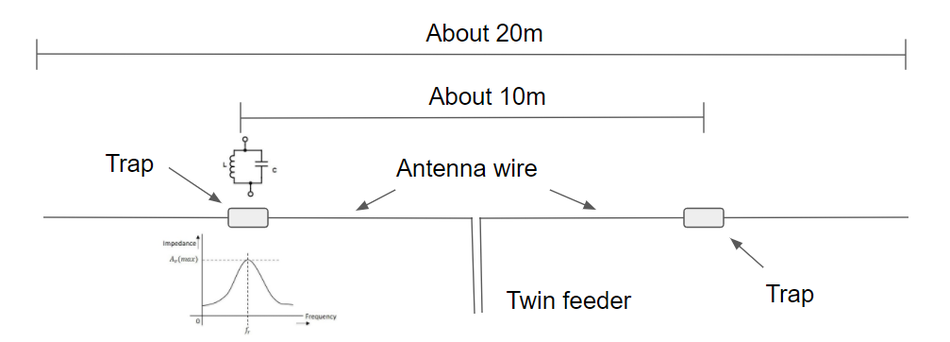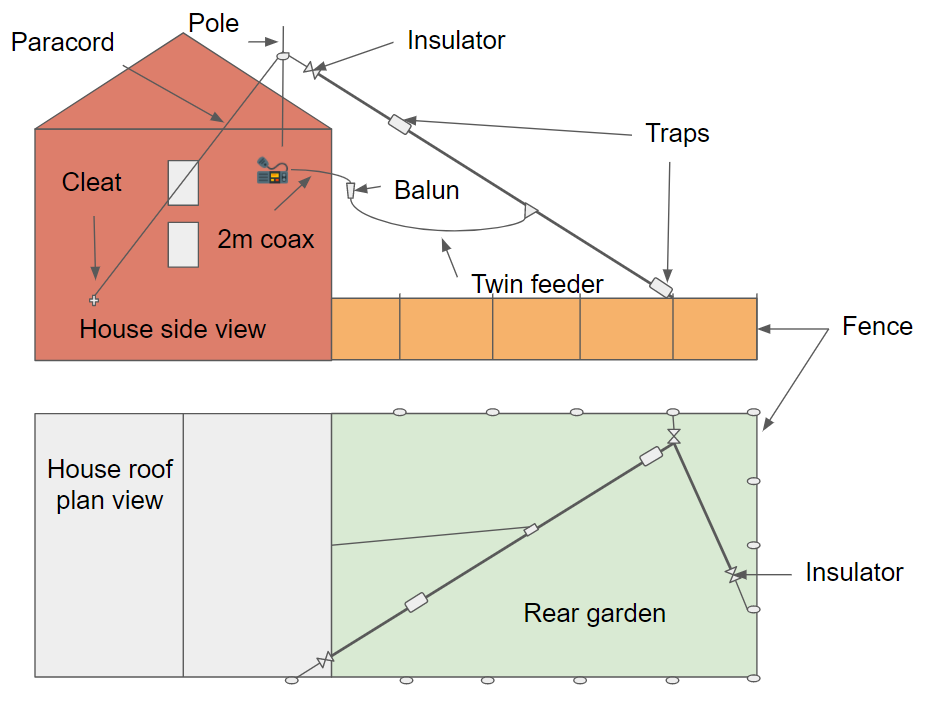- Home
- Learn Morse code quickly
- Data mode communication on the Yaesu FT-817
- Low cost sound card for data modes
- Data mode communication on the Yaesu FT-991
- Data mode communication on the Elecraft KX3
- WSJT-X quick start guide
- Data mode macros
- Amateur radio Q-Codes
- HF contact script
- 2m and 70cm repeater contact script
- Phonetic alphabet
- 20 metre delta loop HF antenna
- Vertical HF whip antenna for 20 or 40 metres
- 10/20 metre Yagi in the attic
- 40 metre loaded dipole
- Multi-band Inverted L antenna
- Make a rotating VHF/UHF HAM SAT antenna array
- 80 metre end-fed antenna
- 40m Hamstick Dipole vs 1/4 wave vertical antenna
- Spectrum Communication trapped dipole 20 & 40 metres
- Artificial grounding with the MFG-931
- Band plans (other site)
- How to add an SDR pan-adapter to your transceiver
- Digital repeater maps UK
- Yaesu FT-817 battery pack
- Make a digital hotspot using a Raspberry Pi
- Make a Digital SWR meter from a kit
- QRP-Labs Ultimate3S US3 beacon building tips
- Make a 100 Watt linear amplifier
- Make a new 8-bit ZX Spectrum from a kit!
- Retro bright plastics
- Bitx40 modifications
- Repair Elecraft T1 ATU after too much power
- FT-817 internal battery power fix
- Fit a dual-band radio to your car
- Make a Go box for mobile operations
- Upgrade the MFJ1234 RigPi with an SSD and Pi4
- ELAD FDM-DUO to Hardrock50 interface
- Recommended CAPA Software
- CAPA software reviews
Multi-band antenna option: Spectrum Communication trapped dipole
After attempting many antenna designs to overcome the physical constraints of my back garden, it was time to try a trapped dipole.
I specifically wanted to work 20 and 40 meters, so a dipole with a 14.100 MHz trap would be needed.
Professional help was required for this project, I needed well-made traps for this antenna to perform well. After a bit of research, a company called Spectrum Communication Limited was recommended as a great source of ideas, tips, and hardware. This turned out to be a great piece of advice.
I gave the owner a call, Tony, to ask for some help. It was immediately apparent that I had come to the right place. As well as some great advice, Tony offered to make me the traps and the entire antenna system. Spectrum Communication specialize in premium antenna design and manufacture along with many other ham related products.
On this page, I'll talk about the Spectrum Communication antenna, how it was squeezed into my back garden and the overall performance of my new COTS (Commercial Off The Shelf) trapped dipole.
What's a trapped dipole?
A trapped dipole is a dipole with blocking filters fitted at the operating wavelengths. For example, a 40 and 20 metre trapped dipole would have traps installed at the 20 metre points which would prevent the 14Mhz band, effectively shortening the antenna. Lower frequencies will pass the trap effectively making the antenna bigger. A great way to get maximum performance from one antenna over many bands.

It's also important to note that the overall length of this dipole will be shorter than a regular (untapped) 40metre dipole due to the inductance of the traps. Trap design and build standard are critical to the performance of this antenna.
Spectrum communication trapped dipole: A very well made antenna
Having the antenna built for me was a real treat. Yes, it's nice to build your own, but it's also good to see how the professionals do it. This top-grade antenna out-performed my own attempts, so for me, there were lots to learn from having an antenna professionally made. Also, the traps needed to be precisely constructed and tested, this may have been beyond my abilities at the time.
Tony provided the complete antenna system, the main features are detailed below:
- Correctly terminated ends - End loops soldered back
- Thick antenna wire
- Lightweight traps
- Twin feeder supplied with the antenna
- Correctly tuned for UK bands
- Very well made
Tony (owner of Spectrum Communication Limited) has been producing professional grade antennas for well over 30 years, all that experience certainly shows in both the hardware and the performance.
Why twin feeder
Spectrum communications recommended the use of twin feeder. The antenna feeder is a critical part of the antenna system, so this should be chosen carefully to ensure maximum performance.
Twin feeder can perform better because of it's noise-cancelling properties. Both feeder conductors are subjected to the same interfering radiation which cancels out any pickup.
Coax, due to its construction, can be noisy as only half of the conductors will pick up the interference, which can lead to noise.
Fitting the dipole in the back garden
The dipole was attached between my 2 metre mast base (which is bolted to the side of the house), the other end to a corner fence post at the end of the back garden. A pulley had been previously fitted to the 2 metre mast base, this made things a lot easier.
There is not quite enough room in my back garden for an entire 40 metre dipole. The answer is to bend the dipole a little to fit it in. One end had to be bent at a 90 degree angle which effects a couple of metres of one antenna leg. This caused the antenna to show slightly different characteristics on 40 metres, but this was not a problem.
Note: It's important to keep the dipole away from the house for both health reasons and to keep cross-over interference to a minimum.

Performance
Wow! This antenna absolutely outperformed all previous attempts. Great low noise performance on both 20 and 40 metres.


This antenna performs much better than any other I have tried so far. Noise is low, much lower than my previous coax fed antenna systems.
Using WSJT-X I plotted the reach of my shack on 5 Watts of power for a couple of hours in the evening. According to the map, people in Australia were hearing my transmission, this was a huge improvement to my previous antenna.
The SWR was a little off on 40 metres, this is probably due to the kink needed to fit the antenna in my back garden.
Build standard, materials and the twin feeder all contribute the great performance.

40 & 20 metre trapped dipole summary
Spectrum Communication antennas are the very best aerials on the market. Bending one end of the antenna allowed me to fit it in to the space available.
My installation, with a bent leg compromised antenna performance. Having only two bands is also a limiting factor, but perfectly usable all year round. However, a better option may be a multi-band inverted L antenna.
I'm very happy with this addition to my shack, my HF experience has been significantly enhanced by this antenna investment.
For more information about antenna traps and antennas please contact: Spectrum Communication Limited directly.
Return to the QSO Shack Homepage.
Please like or share this page:
This site is sponsored by: AdaptiveBMS CAPA software for business improvement
Contact us: radio@adaptivebms.com
Copyright © 2011-2020 Adaptive Business Management Systems Ltd. All rights reserved.






